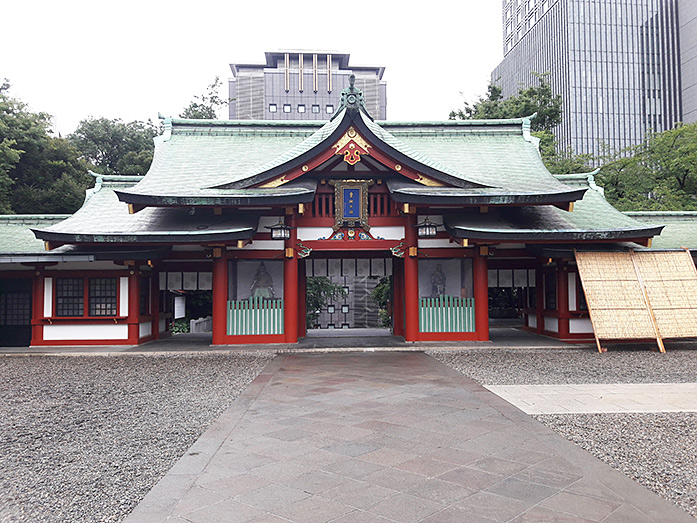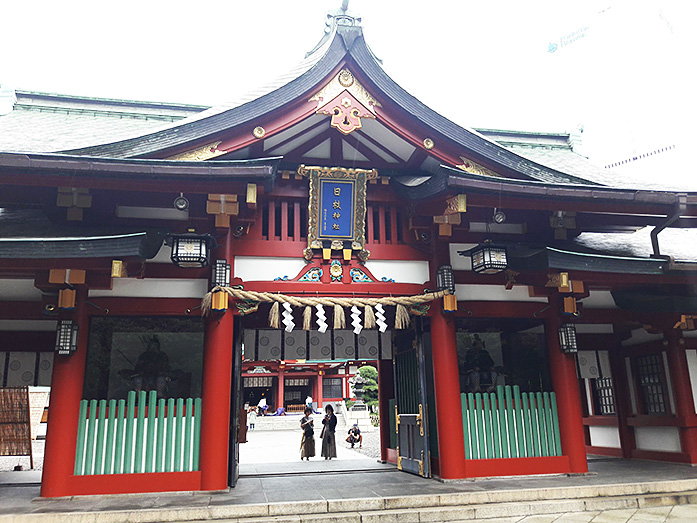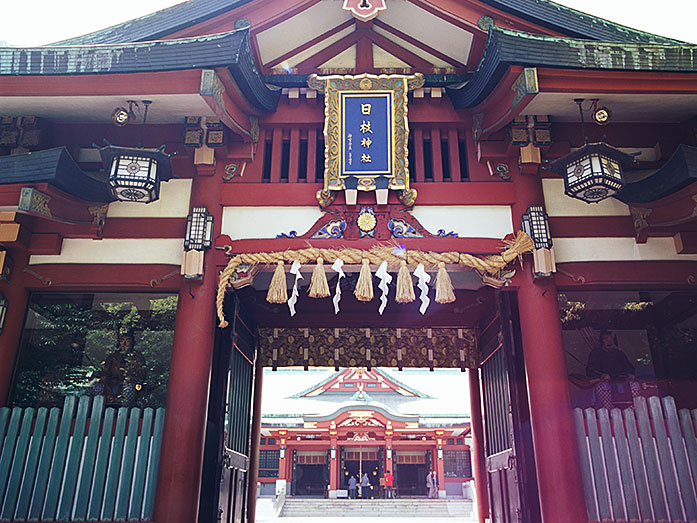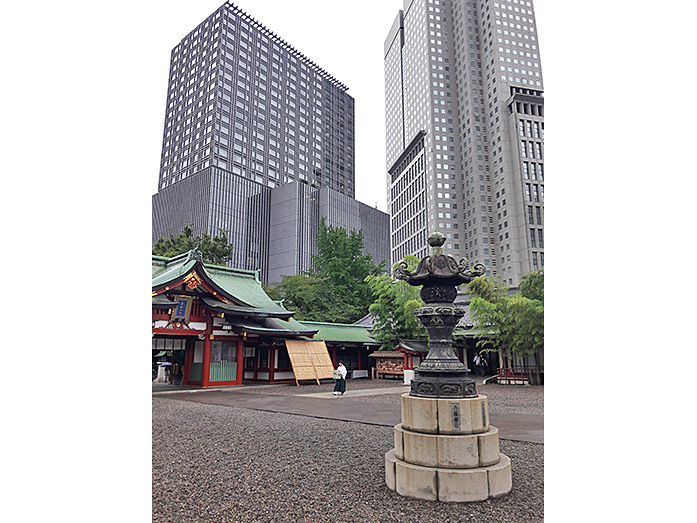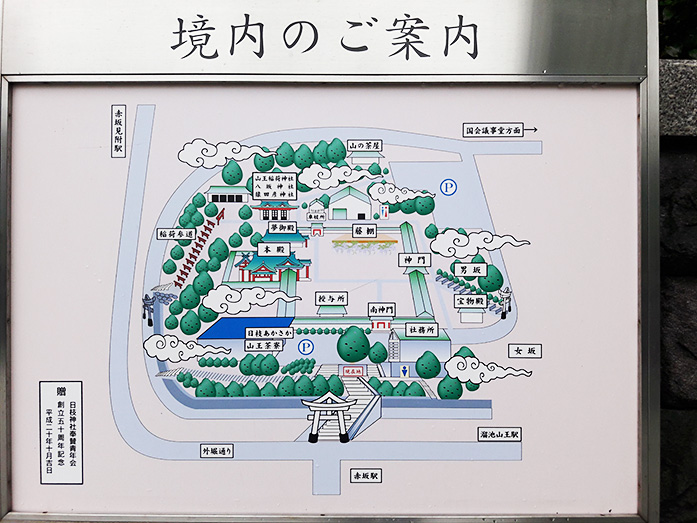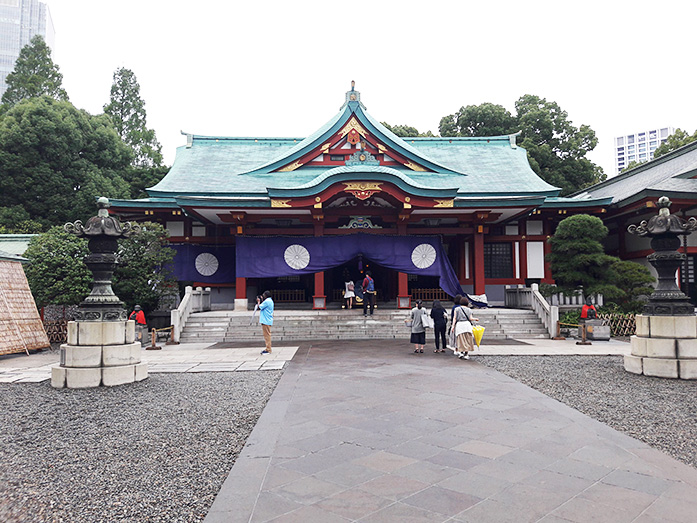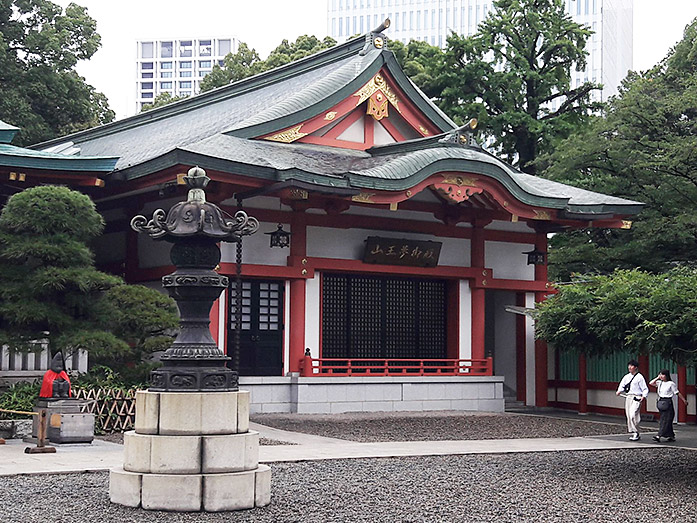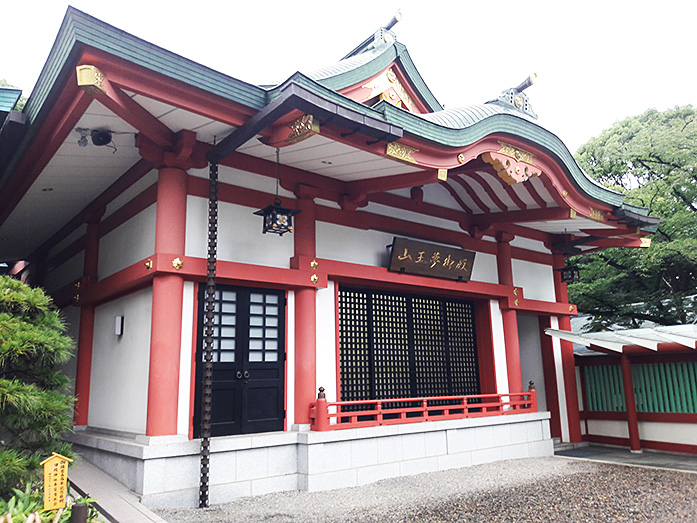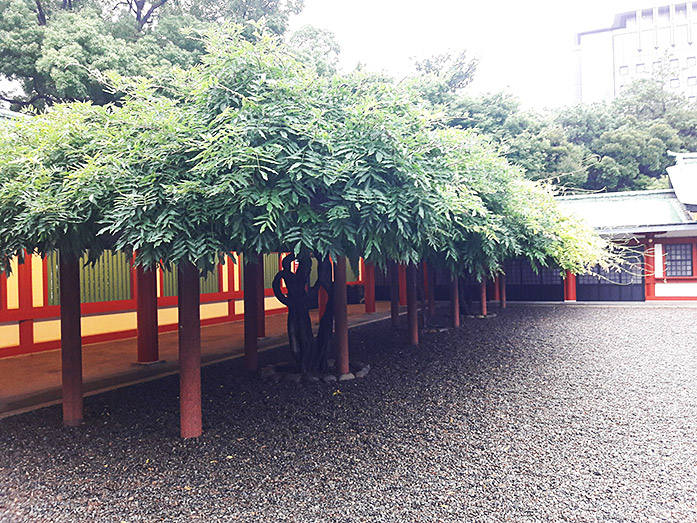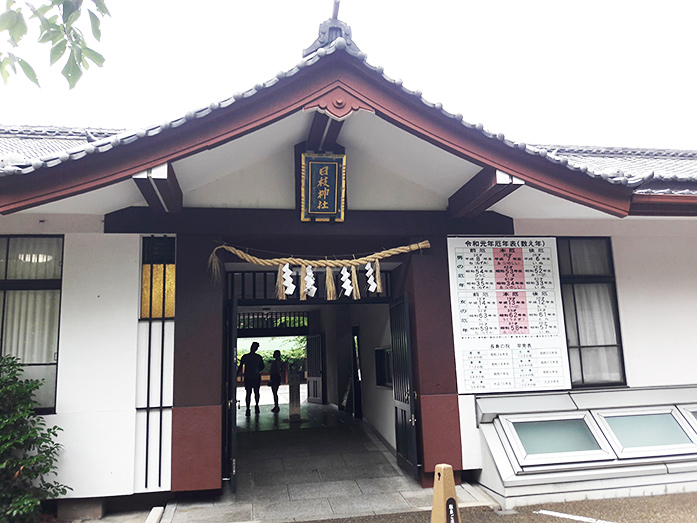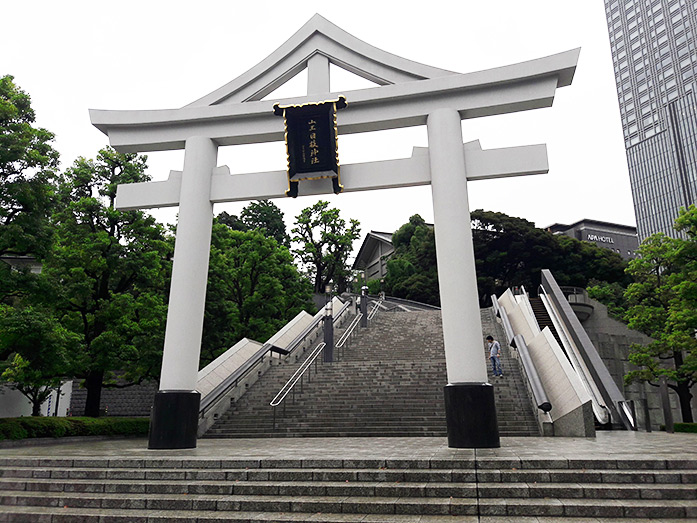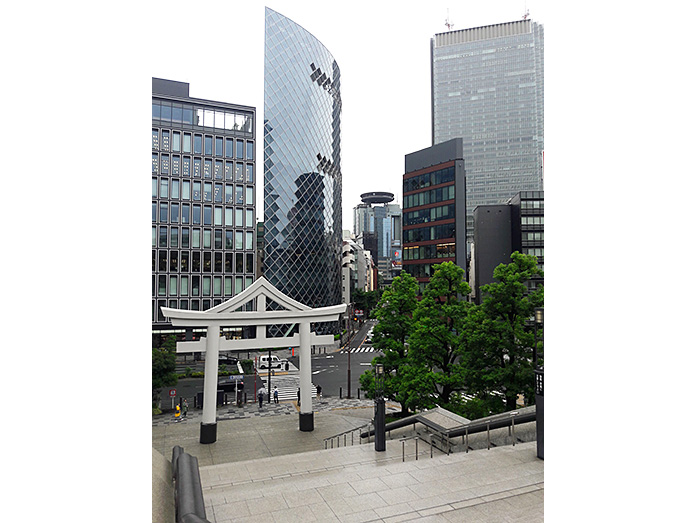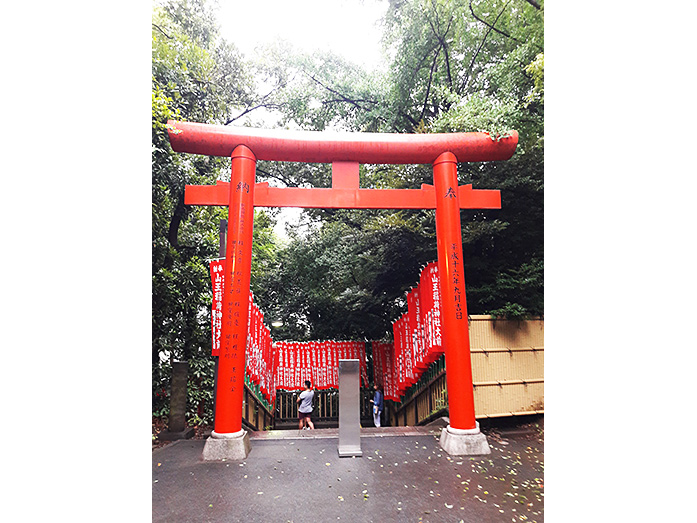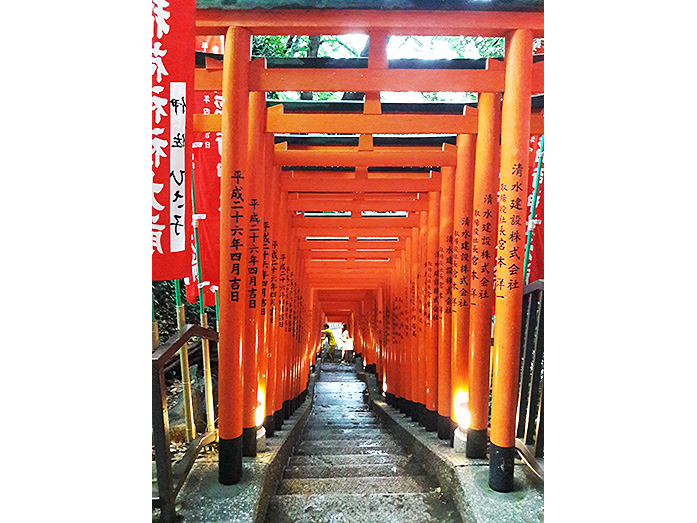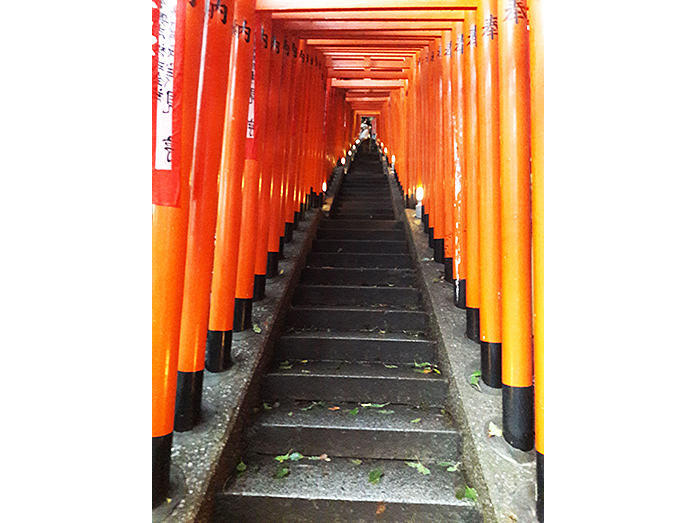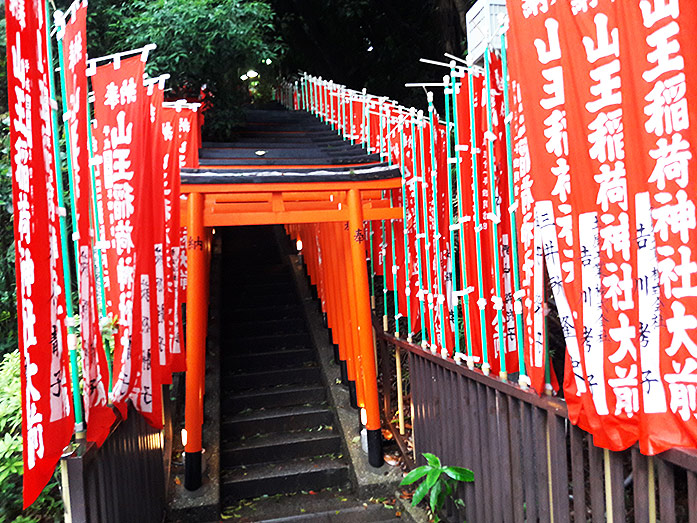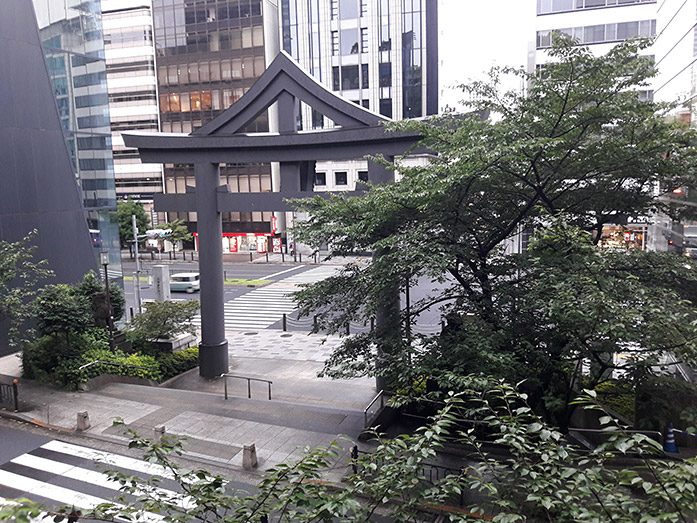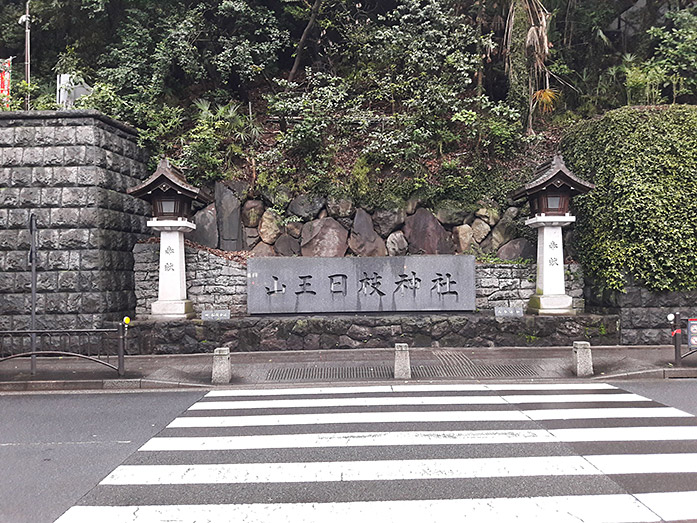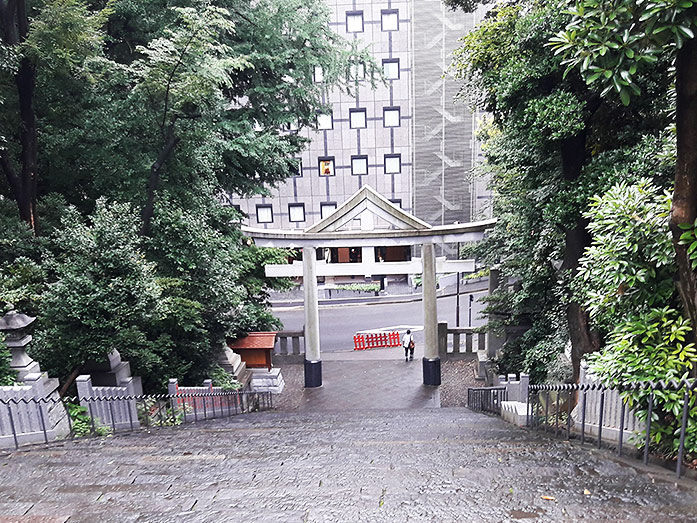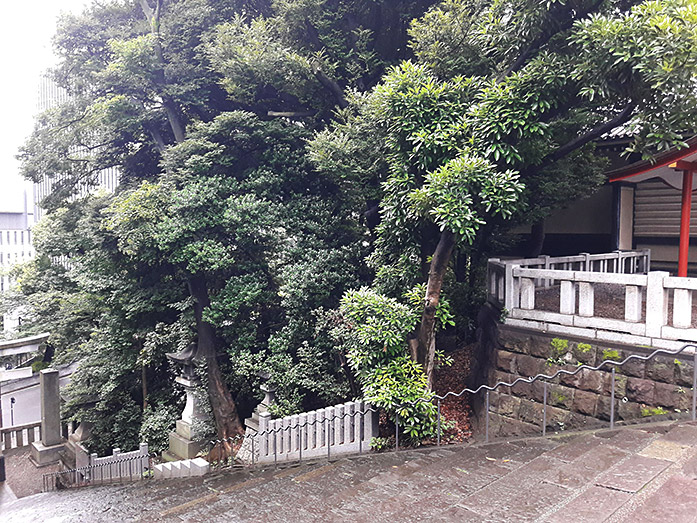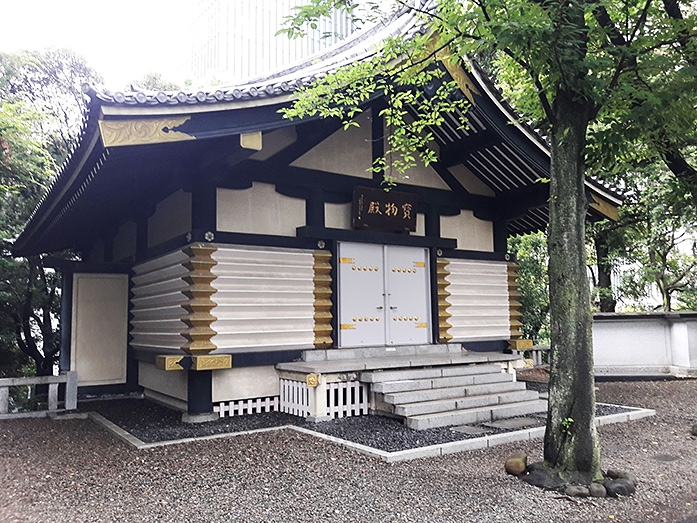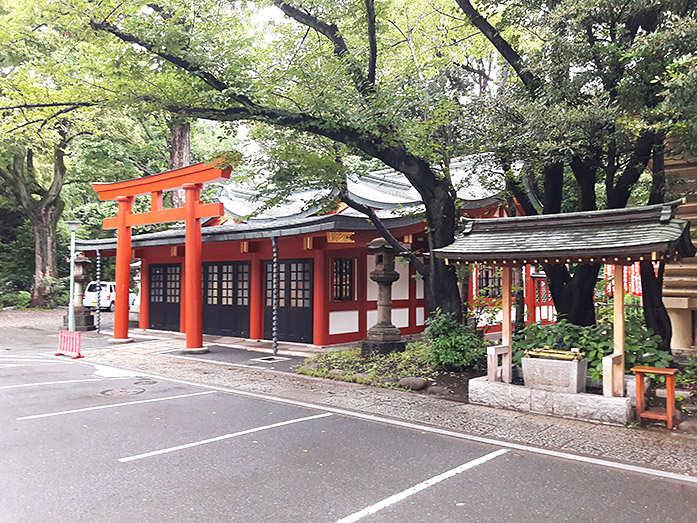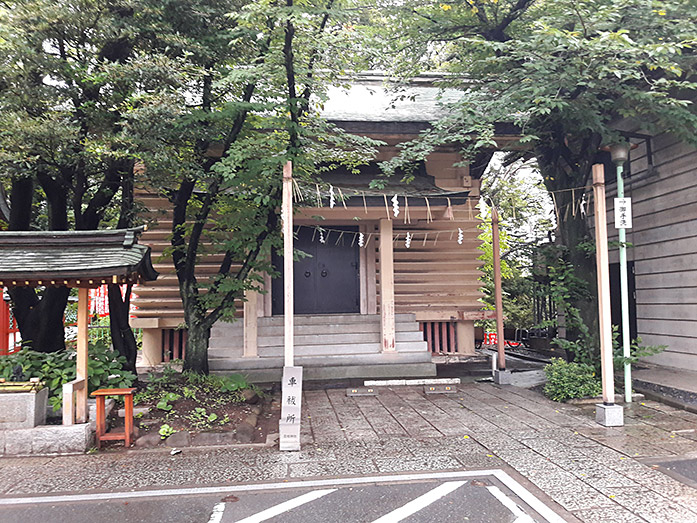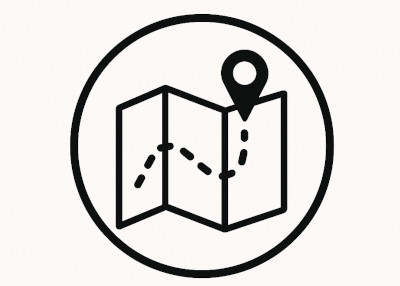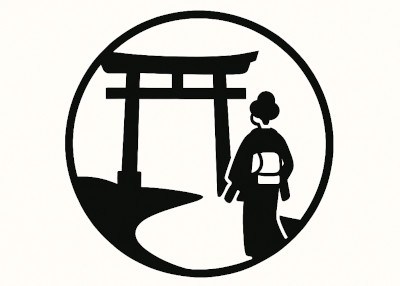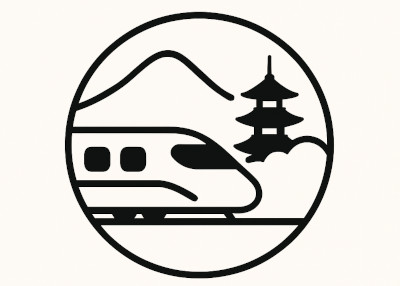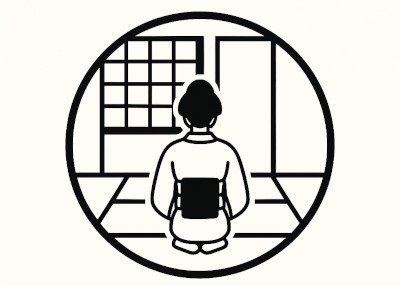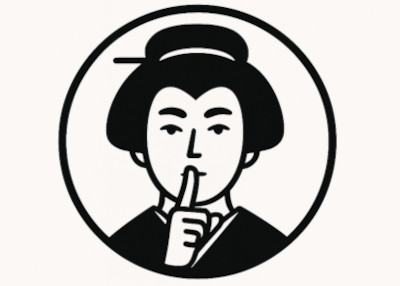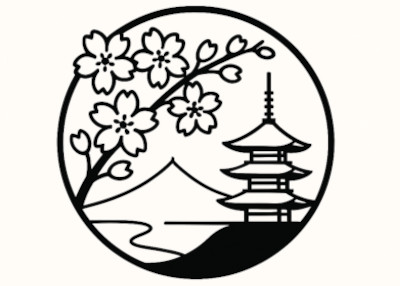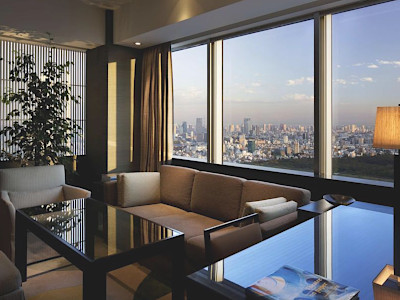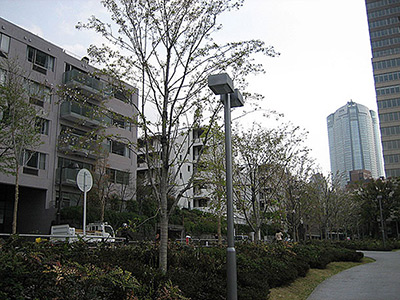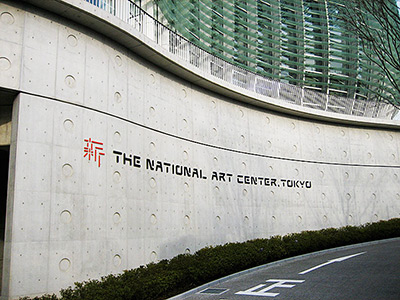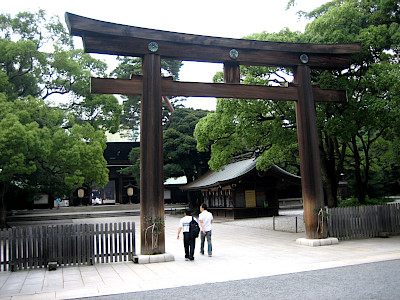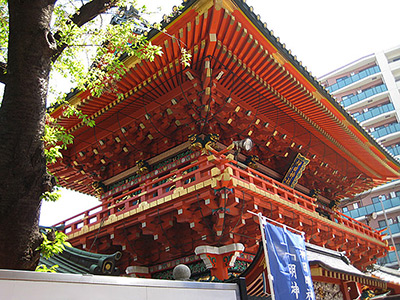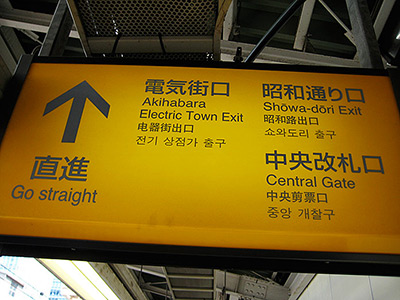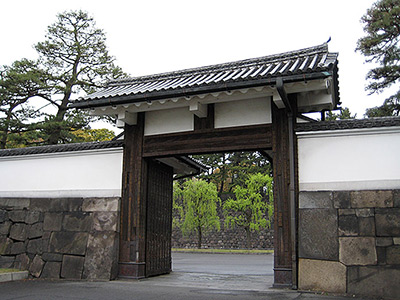Hie Shrine (Hie-jinja) in Tokyo
This post can contain affiliate links, which means that we may receive a small commission if you make a purchase using these links.
Facts & Figures
The Hie Shinto Shrine (Hie-jinja) in Tokyo is located on a hill between the Nagatacho and Akasaka business districts. It is the protector shrine of Edo Castle/Imperial Palace. Hie is dedicated to Oyamakui-no-kami (Sanno-no-kami), a Japanese deity and guardian of Mount Hiei (Shiga prefecture) near Kyoto. Its divine messenger is the monkey. Therefore you will find many monkey statues at the shrine grounds. The architectural style of the shrine is called Gongen-Zukuri.
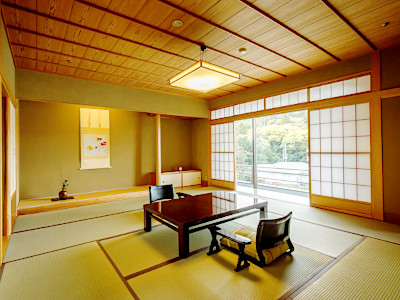 Best Places to Stay in Tokyo >
It consists of a complex roof system in which the Haiden (hall of worship) and Honden (inner sanctuary) are connected. Enjoy the 90 impressive red torii gates leading up to the main shrine. The sight of the torii gates alone is worth a visit. Hie Shrine contains a sword (tachi), which is considered a National Treasure. You can find there also 14 important cultural assets, 13 swords, and one naginata (bladed weapon with a long wooden shaft). It is also a very popular place for families to visit during the Shichigosan coming-of-age festival and it is the starting point of the famous Sanno Matsuri (festival) in June. People come here to wish/pray for a safe birth, to get a girlfriend or boyfriend, to be a lucky winner, to have prosperous businesses, and to get rid of something evil. Every day at around noon employees of the surrounding office buildings use this place for their lunch break. My tip: On weekends you will have the chance to witness a traditional Japanese wedding with a woman wearing a beautiful kimono.
Best Places to Stay in Tokyo >
It consists of a complex roof system in which the Haiden (hall of worship) and Honden (inner sanctuary) are connected. Enjoy the 90 impressive red torii gates leading up to the main shrine. The sight of the torii gates alone is worth a visit. Hie Shrine contains a sword (tachi), which is considered a National Treasure. You can find there also 14 important cultural assets, 13 swords, and one naginata (bladed weapon with a long wooden shaft). It is also a very popular place for families to visit during the Shichigosan coming-of-age festival and it is the starting point of the famous Sanno Matsuri (festival) in June. People come here to wish/pray for a safe birth, to get a girlfriend or boyfriend, to be a lucky winner, to have prosperous businesses, and to get rid of something evil. Every day at around noon employees of the surrounding office buildings use this place for their lunch break. My tip: On weekends you will have the chance to witness a traditional Japanese wedding with a woman wearing a beautiful kimono.
- Hie Shrine (Hie-jinja)
- Opening Hours - 6:00 am to 5:00 pm - daily (October - March)
- Opening Hours - 5:00 am to 6:00 pm - daily (April - September)
- Admission Fee - free
History
The Hie Jinja Shrine was founded in 1478 by the lord Ota Dokan (1432 - 1486) on the site of the Edo Castle, which is now the location of the Imperial Palace in Tokyo. In 1607 the decision was made by shogun Tokugawa Hidetada (1579 - 1632) to relocate Hie Shrine near the present National Theatre of Japan (Kokuritsu Gekijo). This gave the citizens of Edo finally access to the shrine to worship there. A huge fire in 1657 destroyed most of Edo including the Hie Shrine. In 1659 shogun Ietsuna Tokugawa (1641 - 1680) gave the order to rebuild the shrine at its present location. From 1871 to 1946 the Hie Shrine stood in the first rank of government-supported shrines (Kanpei-taisha). During the heavy bombings of Tokyo during World War 2 the shrine was destroyed but reconstructed in 1958. Emperor Meiji (1852 - 1912) came here to pray for peace and prosperity for the country.
Location

The Hie-jinja Shrine is located south of the Imperial Palace and west of the National Diet Building in Tokyo.
Address: 2 Chome-10-5 Nagatacho, Chiyoda-ku, Tokyo 100-0014
How to get to Hie-jinja Shrine?
- get off at Kokkaigijidomae Station served by Marunouchi Subway Line and
- 8min from Kokkaigijidomae Station to Hie Shrine
Sightseeing spots
Top:
Tunnel of Torii (Senbon Torii) - Walk through the 90 vermilion torii gates alley and enjoy the unique atmosphere. It feels a bit like the famous gates of the Fushimi Inari Taisha shrine in Kyoto.
Honden (Main Hall) - The architectural style of the building is called Nagare-zukuri, which means a curved asymmetrical roof extends further on the side of the main entrance to provide more shelter for worshippers. The main hall was made out of hinoki cypress wood.
Masaru - These are statues of monkey-like creatures located at the main shrine. They are holy statues representing a husband (right side) and wife with a baby (left side). Masura is there to keep the evil spirits away. Also, the wooden wish plates (ema), which you can buy there have the shape of a monkey.
Torii Gate - The stone Torii Gate at the entrance is one of the largest in Tokyo.
Chrysanthemum garden - The garden is located behind the main hall. You will find there more than 200 different kinds of chrysanthemums.
Treasure Hall Gallery - It is a small museum with a nice collection of a portable shrine, Edo-period weapons, dolls, colored woodblock prints (ukiyo-e), and letters (over 400 years old). Many swords on display are designated as national treasures and important cultural properties. Do not miss the beautiful art pieces by painter Yoshu Chikanobu (1838 - 1912) and painter Hanabusa Itcho (1652 - 1724). Or the famous long sword Itomaki-no-Tachi made by Ichimonji Norimune. Btw the museum is open on Tuesday or Friday and the entrance is free.
Festival & Events (dates can change without notice)
June
Sanno Matsuri (mid-June)
The Sanno festival belongs to the three great Japanese festivals of Edo. Part of the festival is the Jinko-sai event, which is only performed in even-numbered years. Three portable shrines and hundreds of followers create a long procession that leads also to the Imperial Palace. One of the followers and the chief priest are allowed to pray there for the well-being of the imperial family. Hie Shrine received this honor as the only Shinto shrine in Japan.
October
Hiwatari Matsuri (3rd Sunday of Oct.)
The Autumn Festival at Hie Shrine is well-known for the
firewalking ceremony. Participants walk barefoot over hot coals. You can also enjoy a parade of portable shrines, traditional music, and dance performances.
November
Shichi-Go-San coming-of-age festival (15th)
The Seven-Five-Three Festival celebrates the growth and well-being of young children.
December
Bell Ringing at New Year’s Eve (midnight)
This tradition can be found at shrines all over the country. You ring the bell and make a wish for the coming year.

